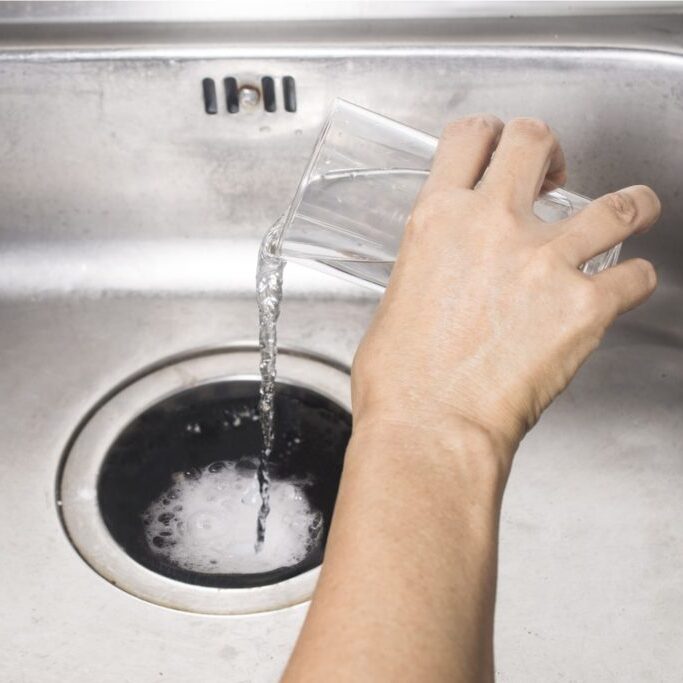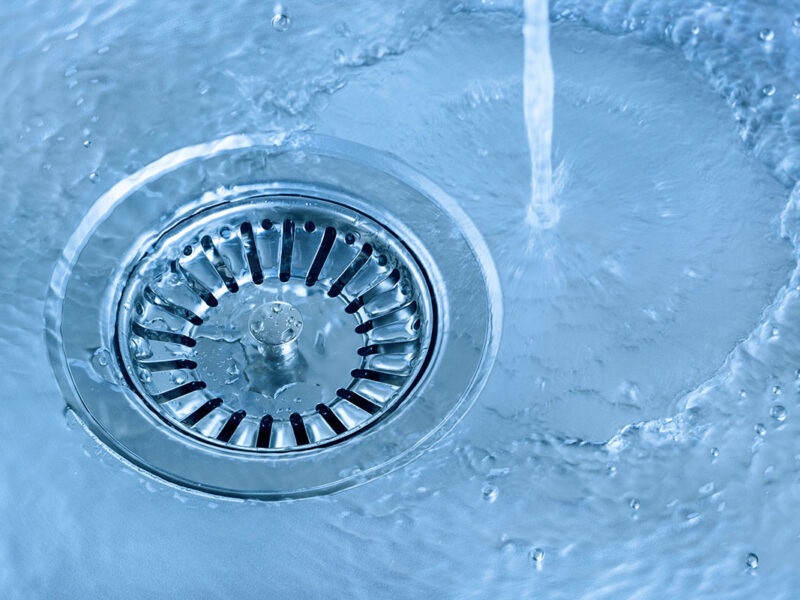Just how do you really feel on the subject of Solved! How to Fix a Slow Sink Drain?

Intro
We have actually all been there: You're cleaning your teeth or washing your hands, and you discover the water pooling in the sink. Instead of quickly swirling down the tubes, it lingers, transforming your once-refreshing early morning routine right into a miniature swamp scene. A slow-draining sink isn't simply aggravating; it's frequently a sign of larger pipes problems hiding beneath the surface. The good news is that most slow-draining sinks can be fixed with a little knowledge, a few fundamental tools, and some perseverance. All set to tackle this project head-on? Let's roll up our sleeves and dive right in.
Comprehending the Reasons For a Slow-Draining Sink
Prior to you start poking around in your pipelines, it aids to recognize what may be causing the stagnation. Comprehending the source makes it simpler to choose the appropriate solution.
Tools and Materials You'll Need
The right tools make all the distinction. The good news is, you won't need a completely equipped plumber's van to finish the job.
Step-by-Step Overview to Fixing a Slow-Draining Sink
Now, let's get into the nitty-gritty. This detailed procedure will certainly guide you via straightforward strategies to restore your sink's drain.
Action 1: Remove and Tidy the Stopper
Usually, the stopper (that tiny plug you lower to obstruct water) is the initial offender. Remove it thoroughly and clean off any type of hair or gunk trapped around its base. Rinse it completely before placing it back in place.
Action 2: Make Use Of a Plunger to Dislodge Debris
Got that plunger prepared? Position it over the drain and provide it a few firm pumps. The concept is to develop suction that can loosen any type of obstruction. If you see bits of debris floating up, you're on the best track.
Step 3: Try a Drain Serpent or Wire Hanger
If the plunger doesn't suffice, it's time to draw out the drainpipe snake. Gently feed it right into the drainpipe and spin as you go. You may really feel some resistance-- that's most likely the blockage. Maintain turning and pulling until you eliminate the blockage. If you don't have a drain serpent, an aligned cable hanger can work in a pinch.
Tip 4: Use a Do It Yourself Drainpipe Cleaner
An all-natural cleaner made from cooking soda and vinegar can break down recurring crud. Put half a mug of cooking soft drink into the drainpipe, followed by half a mug of vinegar. Allow it fizz for about 15 mins, then flush with hot water. This chain reaction typically does wonders for minor blockages.
Step 5: Rebuild and Check the Sink
Put whatever back with each other and run the tap. Does the water now swirl away at a decent speed? If yes, provide on your own a pat on the back. Otherwise, do not misery-- there are still a couple of more dress up your sleeve.
Essential Devices for DIY Fixes
A plunger is your best starting point. A tiny, sink-sized bettor develops suction that can displace minor blockages. For more relentless blockages, a drainpipe snake (sometimes called a plumber's auger) works wonders. A set of gloves, a flashlight, and possibly a set of protective safety glasses are likewise handy.
Advised Cleaning Solutions
Light dish soap and warm water can aid break down oily accumulation. A mix of baking soft drink and vinegar is a reliable home remedy, and chemical cleaners use an even more environmentally friendly technique. Maintain chemical drainpipe cleansers as a last hope, as they can be severe on your pipelines.
Typical Perpetrators Behind Slow Drain
So, what's obstructing things up? Usually, it's a mix of daily debris-- believe hair, soap scum, toothpaste deposit, and leftover food bits. With time, these tiny bits collect and hold on to the pipe walls, progressively tightening the flow and making it harder for water to travel through. Sometimes, mineral deposits from difficult water can likewise contribute to the crud, developing the best tornado for persistent clogs.
When is it Time to Do Something About It?
If you see the water draining slower than normal, it's a great concept to intervene earlier rather than later. Waiting as well long could cause complete clogs, undesirable odors, or even pipeline damages. If the water takes greater than a few secs to clean out after shutting off the faucet, consider it a red flag and prepare to place on your DIY hat.
Safety First: Precautions and Preparations
Prior to you launch into unclogging setting, consider safety. You're handling potentially dirty water and particles, so slip on a pair of handwear covers. If you're using chemical cleaners, ensure the space is well-ventilated and comply with the directions on the tag.
Safety Equipment and Work Area Configuration
Set some old towels or dustcloths around the sink area to catch sprinkles. Remove any kind of items that could get in your means, like soap dispensers or toothbrush owners. Make sure you have great illumination-- grab a flashlight if required.
Alternative Approaches for Stubborn Clogs
Not all obstructions are created equal. If your sink still rejects to comply, think about these different services.
Sodium Bicarbonate and Vinegar Technique
We currently discussed this, however it's worth keeping in mind once more. This mild, environment-friendly method is more secure than chemical cleaners and often fairly efficient.
Chemical Drain Cleaners
Enzyme-based cleansers make use of natural microorganisms to digest organic matter. They're a superb choice if you're seeking to avoid harsh chemicals. Simply keep in mind, they may take a bit longer to function their magic.
Chemical Drain Cleaners: Pros and Cons
Chemical cleansers can blast via difficult clogs fast, yet they're not without disadvantages. They can generate warm and fumes, damage pipes if made use of excessively, and present environmental threats. Use them moderately, and always comply with the instructions thoroughly.
Safety Nets to Maintain Your Sink Flowing
Prevention is the very best cure. By taking on a couple of simple practices, you can keep your sink from decreasing to begin with.
Normal Cleaning Practices
Wipe down the sink basin and fixture area regularly. Remove hair or food particles prior to they have a chance to wash down the drain.
Preventing Dangerous Compounds Away
Think twice prior to dumping coffee premises, grease, or fibrous veggie scraps down the sink. These perpetrators hold on to pipe walls, developing obstructions in time.
Regular Upkeep Checks
Arrange a quick monthly evaluation. Run hot water via the sink for a few mins, paying attention to the circulation. If it seems sluggish, act quickly prior to it becomes a full-blown obstruction.
When to Call a Professional Plumbing Professional
Sometimes, no matter just how tough you try, that clog simply will not budge. That's when it's time to generate the pros.
Indications That Indicate an Extra Major Issue
If your sink drains slowly despite numerous attempts, or if you notice water backing up in various other fixtures (like your shower or bathroom), you may have a more significant pipes issue hiding deeper in the system.
Balancing Do It Yourself Initiatives with Professional Assistance
While do it yourself can conserve you cash and offer a feeling of success, there's no embarassment in calling a specialist. An expert plumbing can evaluate your whole pipes configuration, making sure there's no underlying damage or long-lasting issue that might cost you a lot more in the future.
Comparing Prices and Long-Term Solutions
Prior to making a decision, consider the big picture. An inexpensive, quick fix might solve the problem briefly, but buying a much more permanent service can save you money and stress and anxiety over time.
Considering the Costs of Do It Yourself vs. Specialist Repairs
DIY solutions usually set you back bit greater than the cost of a bettor or a container of cooking soda. Professional solutions, on the other hand, featured a price yet might protect against repeated issues and pricey fixings later on.
Purchasing Top Quality Fixtures and Upgrades
If your sink's style contributes to regular clogs, it might be worth updating to higher-quality fixtures or changing the pipes layout. Consider this a financial investment in your home's functionality and convenience.
Verdict
A slow-draining sink can seem like a small irritability, however it's frequently a sign that your pipes requires a little tender loving care. By comprehending the root causes, utilizing the right tools and strategies, and devoting to easy safety nets, you can keep your sink moving easily. And when all else fails, never think twice to contact a professional-- your home's pipes is worth the financial investment in care and upkeep.
4 Tips to Fix a Slow Draining Sink
Removing the Pop-Up
This is a great place to start when it comes to troubleshooting a slow draining sink. If your sink has a pop-up, carefully take it out and remove debris that has built up around the tool. This will also allow you to see if there are any significant blockages in the drain that you can pull out on your own to help clear up the issue.
Use a Zip-It Tool
Like a snake for a large drain, a zip-it tool helps clear out any debris or hair from a sink drain. A tool like this can be used with a drain that pops out or not as it s thinner than most snake-like tools.
Use a Drain Cleaner
Whether making an at-home cleaner or buying a solution at the store, this is a common fix many turn to when it comes to a slow draining sink. There are several options available for purchase at local supermarkets, but for those who prefer to create their own solution, one of the most common is the following.
How to Unclog a Drain Naturally
Pour boiling water down the drain Pour cup of baking soda down the drain Pour cup of vinegar down the drain Wait 10 minutes Pour boiling water down the drain again Turn on the hot water faucet to clear out the solution Use a Plunger
As a worst-case scenario option, a plunger may be a good option for those who are still struggling to get debris out of their drain. This could be especially useful if there is a large item that you suspect may be significantly stuck down the drain.
https://www.abaileyplumbing.com/blog/2021/august/4-tips-to-fix-a-slow-draining-sink/

I'm very inquisitive about Solved! How to Fix a Slow Sink Drain and I am hoping you liked our page. Appreciated our entry? Please quickly share it. Let someone else check it out. I appreciate reading our article about Three Common Ways to Fix a Slow Drain.
This Site